10. Strella (A Woman’s Way) (Greece, 2009, Panos Koutras)
Cinematographer: Olympia Mytilinaiou

A self proclaimed “queer-punk” director, Panos H. Koutras made his breakthrough with his 2009 award winning “Strella.” With elements of Greek tragedy and Greek folk, “Strella” deals with epicenity and the adversities of being transgender in a divided country that is holding on to its past, but is also desperately trying to break through and tune in with the present. Sensitive as it is provocative, “ Strella” uses neon at times with excess and at times with parsimony, and delivers visual splendor built on the primary blue, red, and pink colors.
Yiorgos (Yiannis Kokiasmenos) is released from prison after a 15 year sentence for a murder he committed back home in a small Greek town. He decides to start afresh and moves to the capital. Anything goes in Athens, so upon meeting a beautiful transgender prostitute by the name of Strella (Mina Orfanou), he decides to spend the night with her. Soon they form a bond, but Yiorgos’ past is catching up with him, leading to some dramatic revelations that will challenge the newly-formed dynamics.
9. Hero (China, 2002, Zhang Yimou)
Cinematographer: Christopher Doyle

Another masterpiece delivered by the precision and consistency of Christopher Doyle’s camera under the direction of Chinese cinema titan Zhang Yimou. Yimou’s “Hero” is probably his best work and it is the absolute definition of what one would call iconic. Certainly one of the best genre defining films of wuxia, the traditional Chinese martial-arts fiction, “Hero” is cinematically one of the jewels of the 21st century. “Hero” not only received universal and time-transcending acclaim for its overall articulation and meticulousness, but is also considered a visual odyssey of color and wonder.
Aside the epic of its theme and orchestration, “Hero” is radical because in a sense it set a trend with its intense color, which is not commonly encountered in action films where color is less frequently used and there is a recurrent preference for the muted palette.
However, “Hero” uses saturated and vivid colors for both nature and costumes, which complement by contrasting the surroundings. Its influence was manifested in many of the following similar ouvres, such as in Ang Lee’s “Crouching Tiger, Hidden Dragon.”
The film is built around an elaborate plot with loads of historical elements and rich action sequences. King of Qin (Daoming Chen) is determined to dominate China. His most notorious adversaries are Broken Sword (Tony Leung) , Flying Snow (Maggie Cheung) and Sky (Donnie Yen). Qin promises fortune and fame to those who hunt down and defeat his would-be assassins. Ten years later, a man named Nameless (Jet Li) claims to have succeeded. However, upon meeting King Qin, he realizes that the ordeal is more complex than that.
8. The Fountain (US, 2006, Darren Aronofsky)
Cinematographer : Matthew Libatique
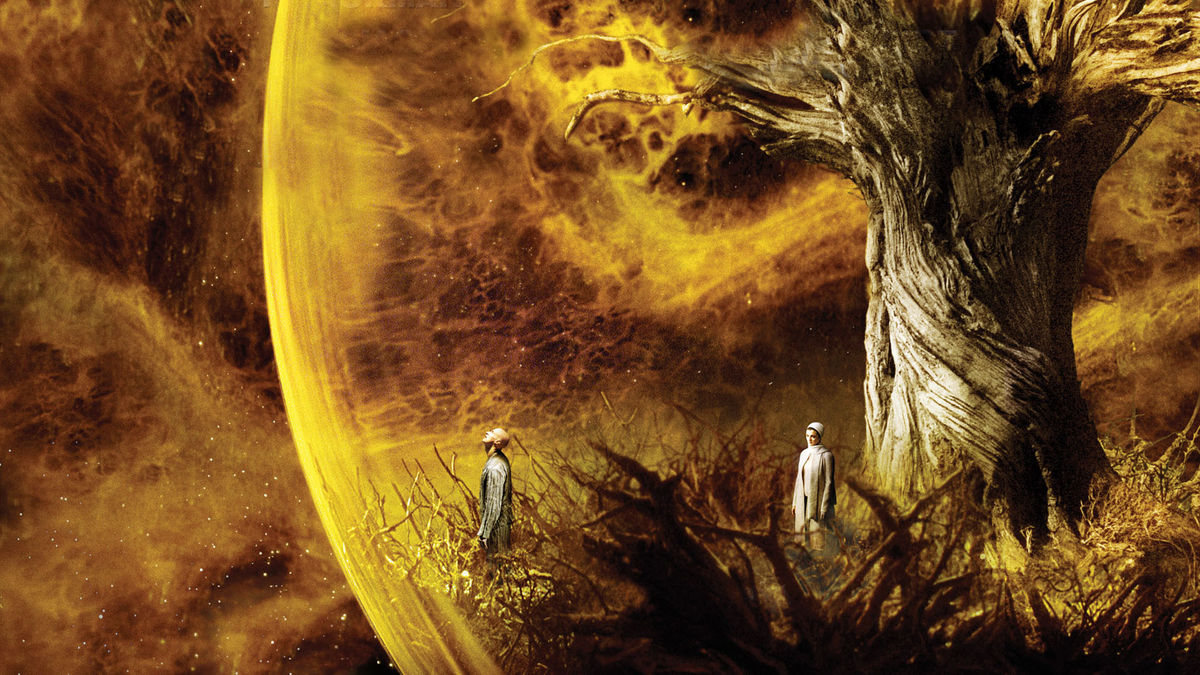
Aronofsky’s “The Fountain” fluctuates between light and darkness. Although large parts of the film are dimly lit, one of the three storylines, the one taking place in deep space where the protagonist (Hugh Jackman) is enclosed in a self-contained biosphere, is full of stunning gold. The visuals in these scenes, designed to depict cosmosis and the essence of the universe, are unlike any other, and are the reward one is given for bearing the torture that the film eventually becomes.
Aronofsky’s attempt to direct this epic magical realism drama with references to history, spirituality, and science fiction was overly ambitious, and even though it received some standing ovations, for most viewers and critics it did not follow through. However awkward this strange blend of timelines, storylines, and contradicting philosophical elements may be, the visual excellence is stellar.
Tom (Jackman) is a neuroscientist desperately seeking a cure for his wife’s cancer (Rachel Weisz). In another storyline, which takes place in the 16th century, he is a conquistador whose mission is to find the tree of life in order to save his queen (Weisz) from inquisition. Finally, the third storyline features Jackman again as a reincarnated form of the same character with the same pursuits of eternal life inside a floating sphere, which carries the tree of life in the vastness if the universe.
7. The Fall (India-US, 2006, Tarsem Singh)
Cinematographer: Colin Watkinson
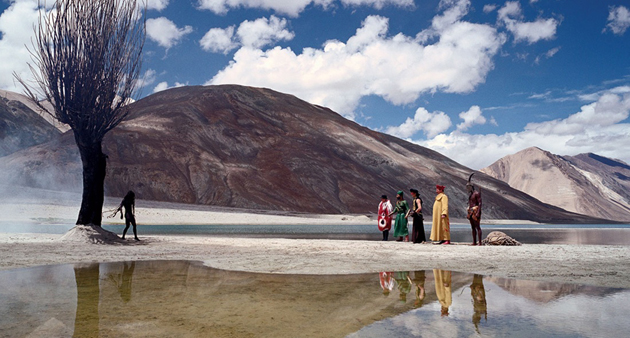
Tarsem Singh’s epic has been gaining fame through the years, more so than upon its original release. The original criticisms concerned the poor development of story and concept, which was contrasted by visual grandiosity, making the end result a bit uncomfortable and dubious. However, with the passage of time, “The Fall” has garnered attention for its larger than life cinematography and not without reason.
Singh gave himself an outstanding amount of time: four years to complete the whole project, which entailed shootings in more than 20 countries, from South Africa to India and from Jaipur to Paris. The monumental sites depicted in the film, the vivid and plethoric color use and the poetry hiding behind each shot, have been appreciated over time and have made film lovers thankful for the director’s self indulgence. Shortcomings aside, “The Fall” is a beautiful journey through the world and its colors, and one of cinematic history, that is.
Set in 1915, the film is about an L.A stuntman, Roy Walker ( Lee Pace), who gets fatally injured during his first stunt and is resting paralyzed in the hospital. There, he meets a fellow patient, a little girl named Alexandria (Catinca Untaru). He decides to tell her a story about her namesake, Alexander the Great. Alexandria’s imagination vividly brings the scenery and characters to life, only to get the resolution of the tale, she will have to do a mortal favor to her storyteller.
6. Survive Style 5+ (Japan, 2004, Gen Sekiguchi)
Cinematographer: Makoto Shiguma
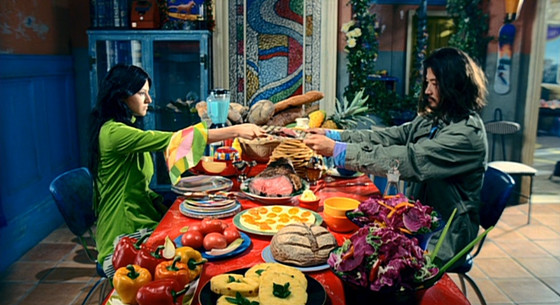
“Survive Style 5+” follows five plot lines. The characters of the situations depicted are loosely interlinked and occasionally enter each other’s storyline, much like life. The first character we‘re introduced to is a man (Tadanobu Asano) who keeps killing his wife, only to find her back home alive and ready to fight. Following that, a suburban family comes to terms with role reassignment, as the father (Ittoku Kishibe) is irreversibly hypnotized into believing he is a bird.
An advertising executive (Kyōko Koizumi), who is linked to the hypnotist (Hiroshi Abe) through an extremely brief sexual encounter, gets inspired by seemingly neutral stimuli which she deconstructs and reconstructs into ingenious ideas for advertisements.
A trio of youth full of dull and self-indulgence passes the time by burgling houses. The main link to all the stories is a hitman (Vinnie Jones) and his translator (Yoshiyoshi Arakawa) who intervene and confront the protagonists with a recurrent existential question about their function in life.
Relatively unknown yet immensely creative, silly, lovely, deep, and provoking, “Survive Style 5+” is a rare jewel of endless multicolored craze. The plethora of colors in “Survive Style” is both a natural occurrence, since Japan is known for its obsession with multicolor kitsch, and also a sly indication of the mischievousness of the figures of the film.
5. The Neon Demon (France-Denmark-US, 2016, Nicolas Winding-Refn)
Cinematographer: Natasha Braier
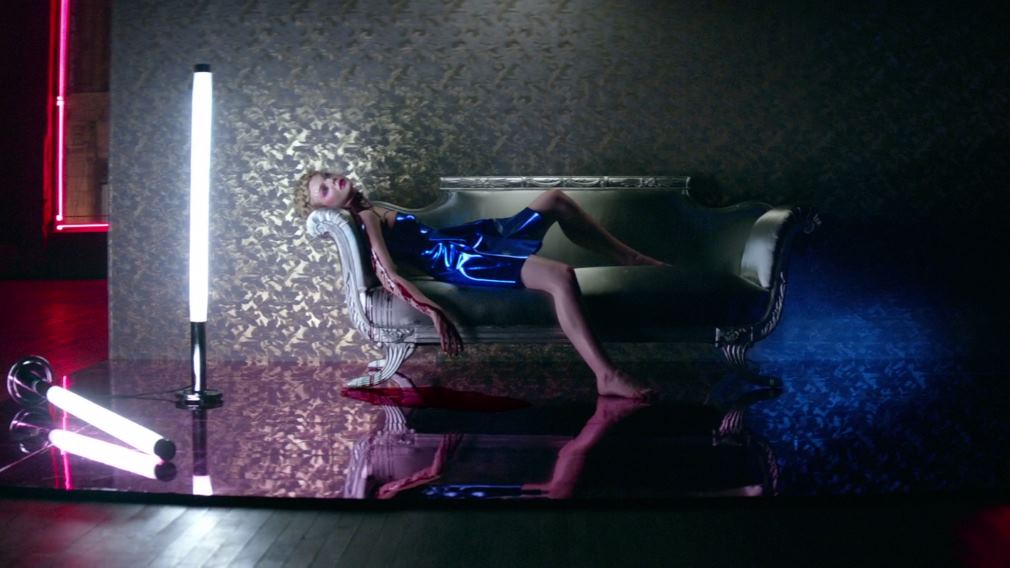
We just have to give Refn a spot when it comes to anything that has to do with color. And the only regrets that may come with doing so is that “The Neon Demon,” much like “Only God Forgives,” does suffer from poor plot and character development.
Even though Refn chooses controversial storylines and characters, it is not that which divides the audience, but the actual quality with which he delivers and executes his visions. This “quality” of the overall product is sometimes problematic and awkward and sometimes magnificent, such as in “Drive.”
The catch here is that Refn loves that about his films, and to some extent he is doing it intentionally. Being of the idea that, “If a film doesn’t divide the audience, it did not penetrate deep enough,” “The Neon Demon,” again much like “Only God Forgives,” received both standing ovations and booes from audiences. The sure thing is that whether one thinks Refn is a genius or just pretentious, his virtuosity in color application is indisputable.
As he has admitted, his affiliation and religious devotion to intense color stems from his partial color blindness, which forces him to select really distinct and saturated colors in order to be able to perceive them. The most profound color explosions occur in “The Neon Demon” where Refn has chosen a theme that both allows and demands plethoric colors.
Jesse (Elle Fanning) is a 16-year-old model who moves to Los Angeles to pursue her dreams. Beautiful and charismatic, she soon evokes the jealousy of the beauty-obsessed women in the industry, and discovers the deadly and competitive nature of the profession.
4. Amélie (France, 2001, Jeune-Pierre Jeunet)
Cinematographer: Bruno Delbonnel

The status that “Amelie” has achieved through the years is something between established favorite and cult classic. Its wide critical acclaim and commercial success upon its release hasn’t faded through the years.
The distinct cinematographic style is of essence to the appeal of the film, with the saturated yellow, green, and red palettes immersing us into the world of Amelie: a world of isolation and sorrow, but kindness and beauty at the same time, which is vivid in color and childlike just like its main character.
Amélie Poulain (Audrey Tautou), a shy but imaginative and mischievous young woman, decides to change the lives of the people around her through a lost childhood hidden treasure. Struggling with her own loneliness, Amelie embarks on a trip to self-discovery, giving and receiving, and eventually and most crucially, attaining happiness.
3. Moulin Rouge! (Australia-US, 2001, Baz Luhrmann)
Cinematographer: Donald McAlpine
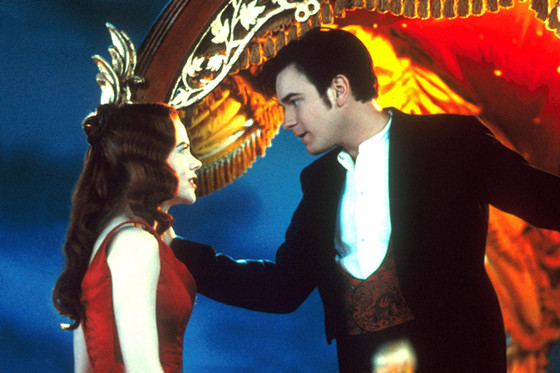
Moulin Rouge! tells the story of Christian (Ewan McGregor), who breaks out of his bourgeois upbringing during the French Belle-Époque and seeks adventure in bohemian Paris. Soon he is introduced to iconic bohemian figure Toulouse Lautrec (John Leguizamo), who in turn introduces him to the ideals of the bohemian revolution.
Everything takes a turn for the dramatic when Christian meets Satine (Nicole Kidman), a charming and talented courtesan who embodies everything Christian has been seeking. The adversities of their union are told through musical and theatrical vignettes and are also re-created in the theater play they produce.
Baz Luhrmann is another known “master of color.” The palette he uses in “Moulin Rouge!” is rather broad, but the shades of red and blue are the overarching ones. Saturated shades of red are used for the interiors of Moulin Rouge, the cabaret in which most of the action takes place, and dark blue is used for the exteriors, creating a contrast between the exciting world of performance and the mundanity of the urban environment.
Burgundy, carmine, and ruby dominate the scenes of musical performances as well as scenes that focus on Christian and Satine’s romance. The extreme use of color serves the elicitation of emotion and most importantly represents the explosion of ideas, art, and creativity of the time.
2. The Grand Budapest Hotel (US-UK-Germany, 2014, Wes Anderson)
Cinematographer: Robert Yeoman
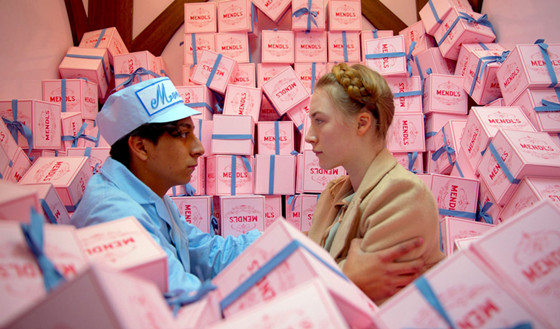
Wes Anderson has fairly earned his “master of color” status and this is evinced almost in every single frame of every film he puts his directorial signature on. Known for his portrayals of adults that act like children and children that act like adults, Anderson paints his films in vivid pastels that convey the mixture of darkness and innocence of childhood.
“The Grand Budapest Hotel” awed audiences and film critics for its sterling use of pastel pink and blue shades. Probably surpassing its colorful predecessor “Moonrise Kingdom,” the film is a treat for the tired eyes and is a rare metal of romantic cynicism.
Gustave H (Ralph Fiennes) is a legendary concierge at the luxurious and prestigious Grand Budapest Hotel. Zero is employed as the lobby boy and with time becomes Gustave’s trustee and protégée.
The story revolves around the theft of an infamous Renaissance painting and the whimsical members of a bourgeois family, fighting for a mythic fortune. After being framed for murder, Gustave has to do all to prove innocent, with Zero’s assistance. Their story becomes intertwined with those of the infamous guests of the hotel.
1. In the Mood for Love (Hong Kong, 2000, Wong-Kar-wai)
Cinematographer: Christopher Doyle, Mark Lee Ping Bin
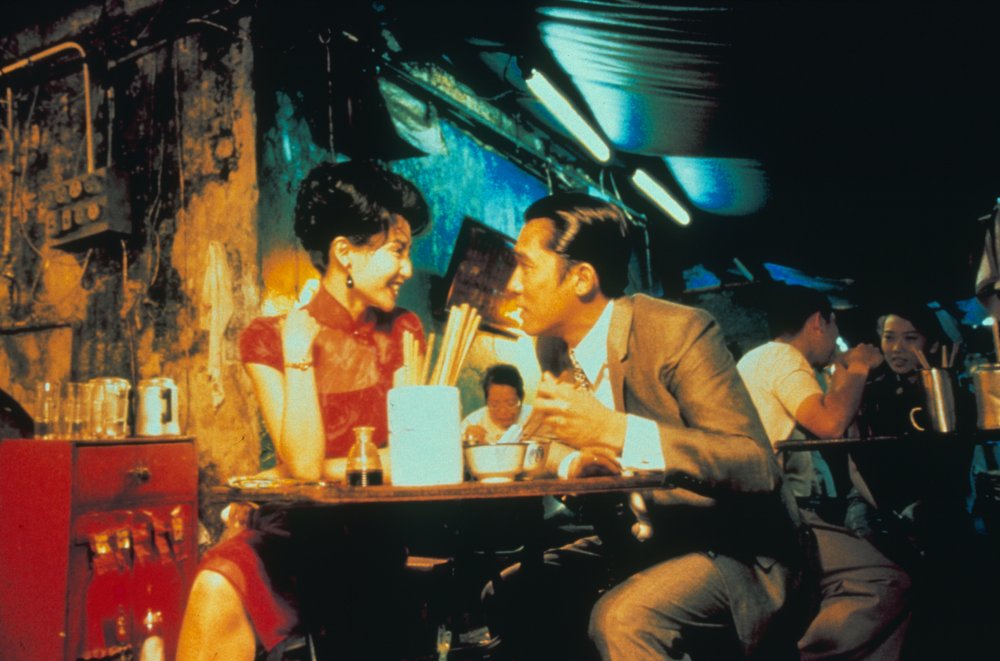
Wong Kar-wai’s “In the Mood for Love” depicts a platonic romance or role-play between Chow (Tony Leung) and Su Li-zhen (Maggie Cheung). Both married to different people, upon having coffee they realize that their respective spouses are having an affair with each other.
Su and Chow start speculating about how this affair came about. They start re-enacting their spouses affair with each other and soon are immersed in a way where their roles become them, and an attachment is formed between the two. Driven by loneliness and the infidelity of their partners, Chow and Su come together to deal with the pain that is caused by the same factor, manifested differently in each of them.
Wong’s love for color is well embedded in his filmography. In “In the Mood for Love,” the excellent color use is due to its concurrence with the emotions and inner worlds of the characters. The overall colorfulness of the film is subdued to the prevailing warm jewel tones and shades of red, from burgundy to maroon.
The association of the tones of red with passion, strong emotion, change, and death is brilliantly calling the viewer to re-experience the re- enactment of the characters, which creates a wonderful loop, of the play within the film. The additionally less intense but still playful colors denote the overall meaninglessness of the hefty issues the characters are confronted with.
Honorable Mentions:
Jeux d’ enfants (France, 2003, Yann Samuel)
Aviator (US, 2004, Martin Scorsese)
Speed Racer (US, 2008, The Wachowskis)
A Single Man (US, 2009, Tom Ford)
Life of Pi (US, 2012, Ang Lee)
Chennai Express (India, 2013, Rohit Shetty)
Her (US, 2013, Spike Jonze)
Moonlight (US, 2016, Barry Jenkins )
Call Me By Your Name (Italy, 2017, Luca Guadagnino)